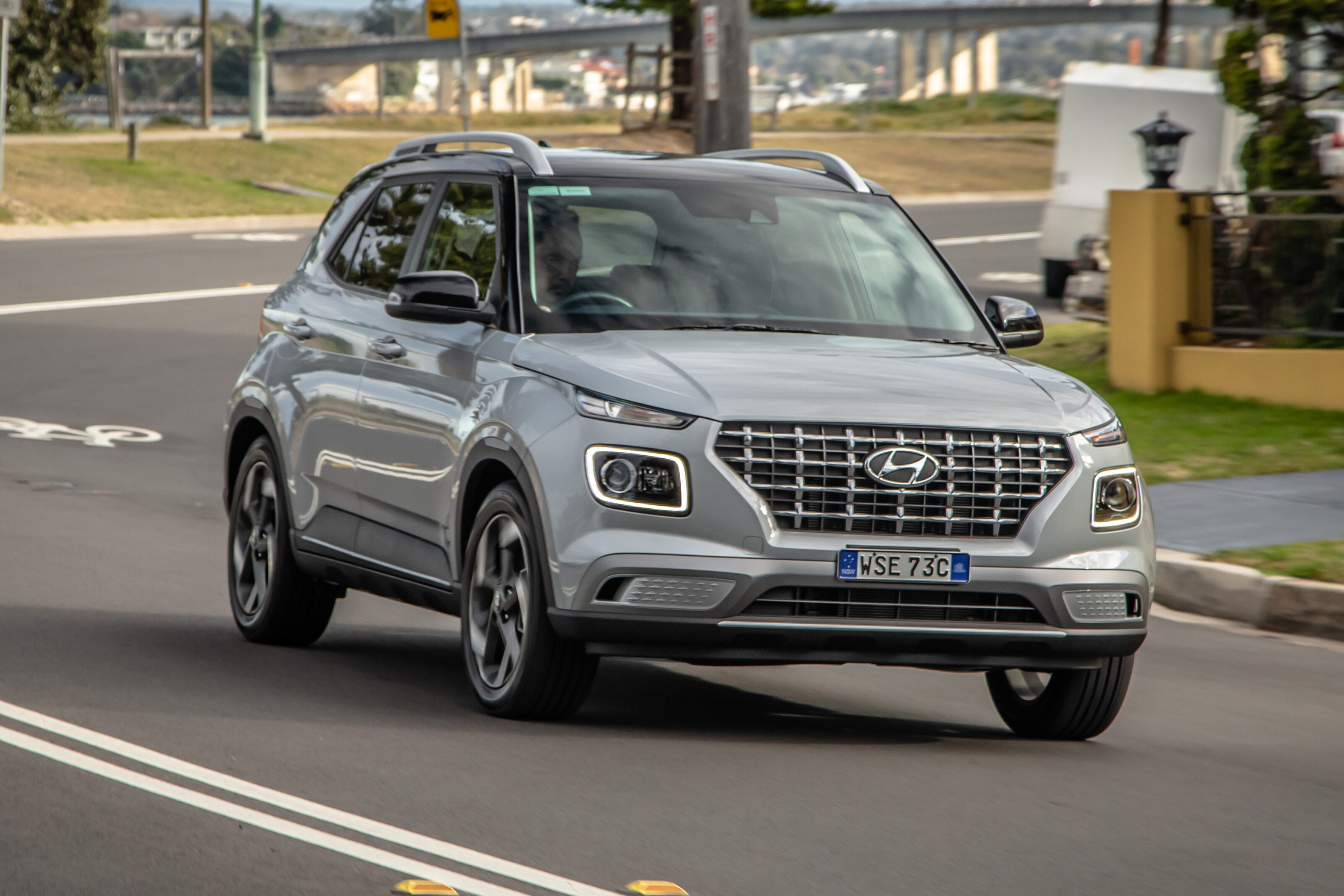Score breakdown
Things we like
- Funky looks
- Spacious for its size
- Good chassis
Not so much
- Featureless back seat
- Characterless engine
- Halogen headlights a bit weak
In a life before cars, I reviewed other things. Books, music, films and as though that wasn’t enough, video games.
Ninety per cent of video games are crap, or at least they were when I was reviewing them. This is something of a tenuous link but the people who designed the Hyundai Venue seem to have taken some inspiration from the wildly successful Minecraft, a blocky, 8-bit style video game that looks like the sort of thing I played on an Apple IIe, not the hugely powerful consoles or gaming PCs the kids have today.
Blocky, upright and bold, the Venue arrived to the light SUV party super late and bumped out its ageing hatchback uncle, the Accent, in the process. Probably even threw glitter on it as it left, just to annoy it.
And with that, the Venue became Hyundai’s entry-level car. A sign of the times when the cheapest car sold by the $13,990 drive-away pioneers is a compact crossover that starts at over twenty grand.
2021 Hyundai Venue Elite Pricing and Features

The Venue range is three tall and here at the top is the Venue Elite tested here, bumping into Mazdas, Toyotas and almost a Volkswagen, coming in at $26,740 before on-road costs. Even though it’s tiny, the inexorable rise of small car prices in Australia makes that figure look fairly reasonable, especially when you see what you get.
Shipping from South Korea, the Elite comes with 17-inch alloys, an 8.0-inch touchscreen, six-speaker stereo, single-zone climate control, reversing camera, keyless entry and start, cruise control, sat-nav, auto headlights, auto high beam, power windows and mirrors and a space-saver spare.
The four-star ANCAP rating might look like a problem, but there is an explanation. You get six airbags, ABS, stability and traction controls, forward AEB with pedestrian detection, forward collision warning, reversing camera, lane-keep assist, driver distraction alert, blind-spot monitoring and rear cross-traffic alert.
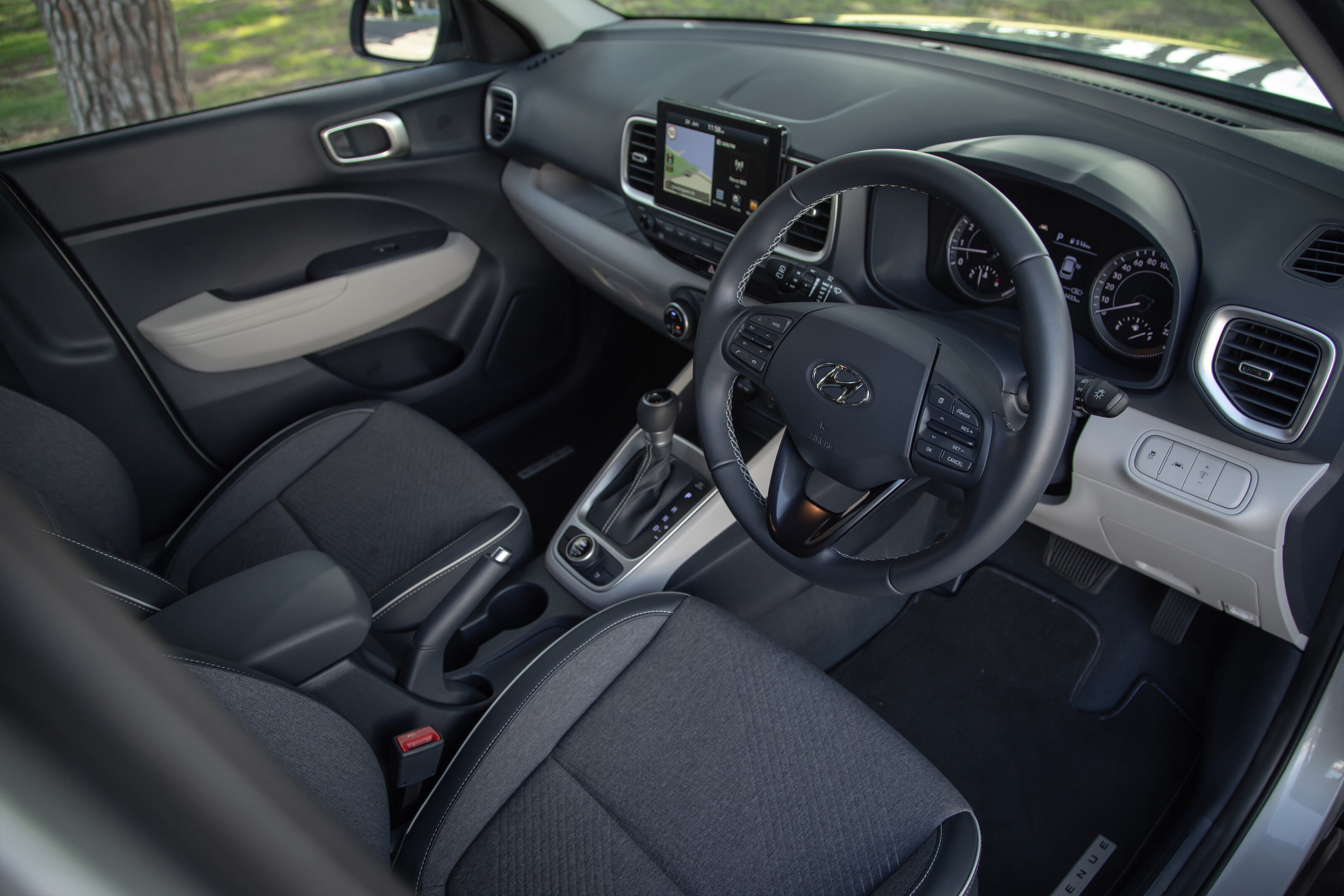
The AEB pedestrian detection works from 5km/h-60km/h and works at night while the cyclist detection is only rated for day use. For other vehicles, the AEB works up to 180km/h.
The kids are looked after with two ISOFIX points and three top-tether anchors
The Venue scored four ANCAP stars in September 2019. Due to a series of complex ANCAP rules – in this case relating to the type of AEB fitted – the Venue scored four ANCAP stars. The 2021 rules are even tougher so while five stars is pretty common in this segment, it won’t be for much longer. Times change and so must safety standards, but they’re not very well explained by the body that sets them.
2021 Hyundai Venue Elite Comfort and Space

The Venue is pretty small by modern standards – just a smidge over four metres – but it has a pretty decent wheelbase to deliver impressive interior space. The cloth-trimmed seats are all fairly comfortable if less style-focused than the exterior, but the real surprise and delight is in the back seat. Well, at first it is, anyway.
I’m not super-tall but it’s a welcome discovery when I find that I can sit behind my driving position and still have plenty of knee and legroom (relatively speaking). My head comes within a couple of inches of both the roof and the C-pillar, which is a bit claustrophobic for longer trips, but it’s fine for short trips. Less fine for short trips is the lack of, well, anything else here in the back, like an armrest or, as I believe is considered important, cupholders. No rear vents, of course, but the doors will hold a small bottle each.
Bottom line is that you can fit two adults in the back in reasonable comfort, but few humans will be happy in the middle seat due to the Venue’s narrow dimensions.

Up front there is just one USB port and one 12V outlet, two cupholders and a matching pair of bottle holders in the doors. There is also a Toyota-style shelf in front of the passenger in the split-level, two-tone dash.
The boot is where the real action can be found. Class competitive at 355 litres, it has a moveable false floor to add some depth should you need to load something a bit tall. Hyundai doesn’t supply a seats-down figure, but it’s probably around the 1000 litre mark and the space is wide, with the seats folding down almost flat and the space doesn’t have a step with the boot floor in the higher position. Quite handy, really.
Under the boot floor, you’ll find the space-saver spare.
The 8.0-inch touchscreen hosts an updated but older version of Hyundai’s media software but annoyingly loses the wireless CarPlay and Android Auto capability of the Active and entry-level Venues. I think it’s something to do with the satellite navigation inclusion that the other two don’t have. The six-speaker audio system is powerful and clear enough for this little car.
2021 Hyundai Venue Elite On the Road
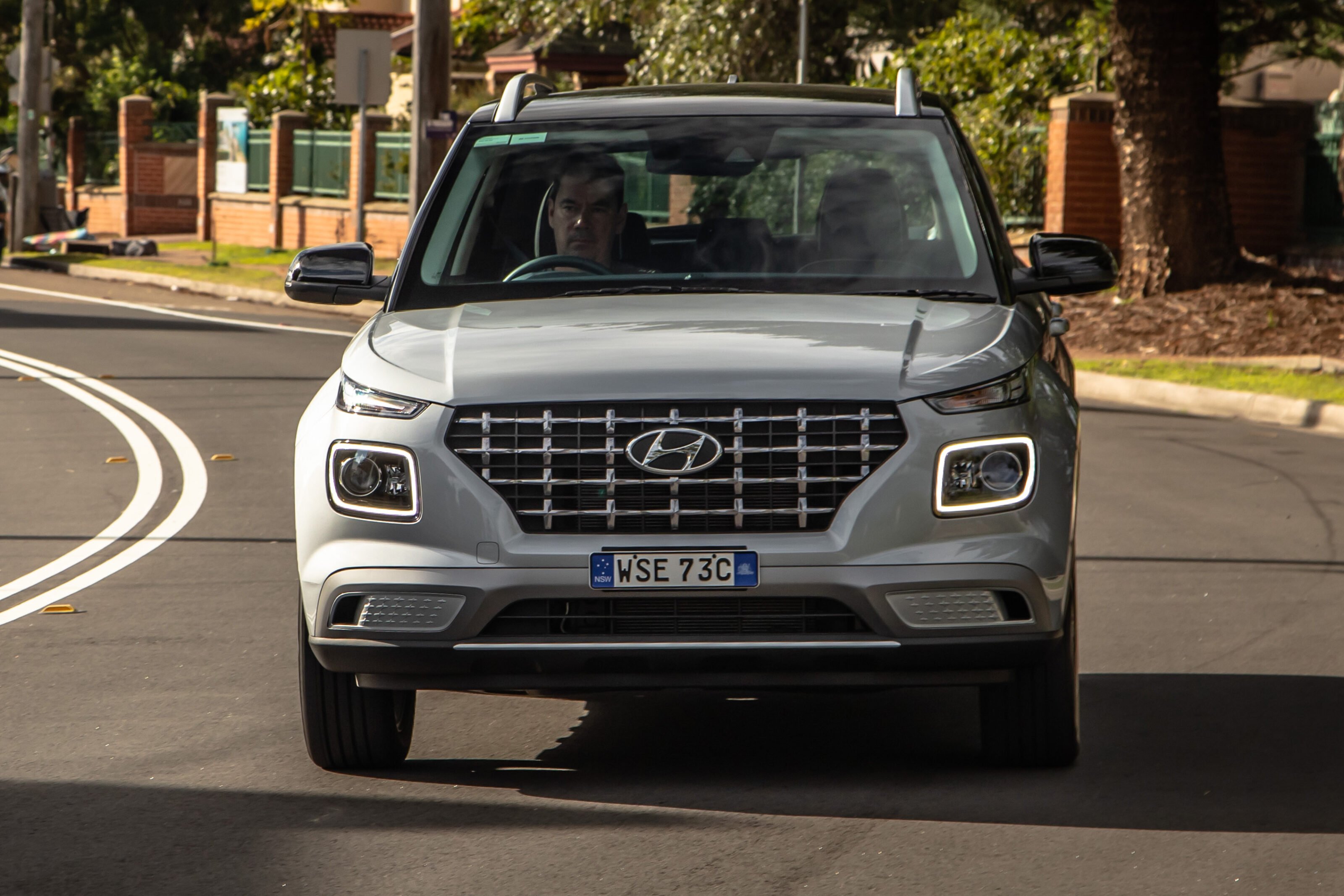
There’s a surprising amount of talent in this class, so the Venue has to be good. The 1.6-litre engine is not going to wake up the neighbours with just 90kW at a high-ish 6300rpm and nor will it drag them out of bed with 151Nm at another high-ish 4850rpm. The variety of engine types in this class is more interesting than the class above, with the Venue going up against small-capacity turbos, three-cylinders and even a 2.0-litre four-cylinder.
The six-speed auto is welcome as it’s not one of those CVTs that afflict many small cars. This transmission is well-calibrated for punching around town, with an enthusiastic pick-up to help get you going with the limited power and torque on offer.
While the engine is largely characterless and a bit gritty under full throttle, it’s perfectly happy to pull past the peak torque figure before the transmission wisely sends you to the next cog. The power deficit is really only apparent when you’re trying to overtake or you’re loaded up and going uphill on a freeway.
he six-speed auto is welcome as it’s not one of those CVTs that afflict many small cars. This transmission is well-calibrated for punching around town, with an enthusiastic pick-up.
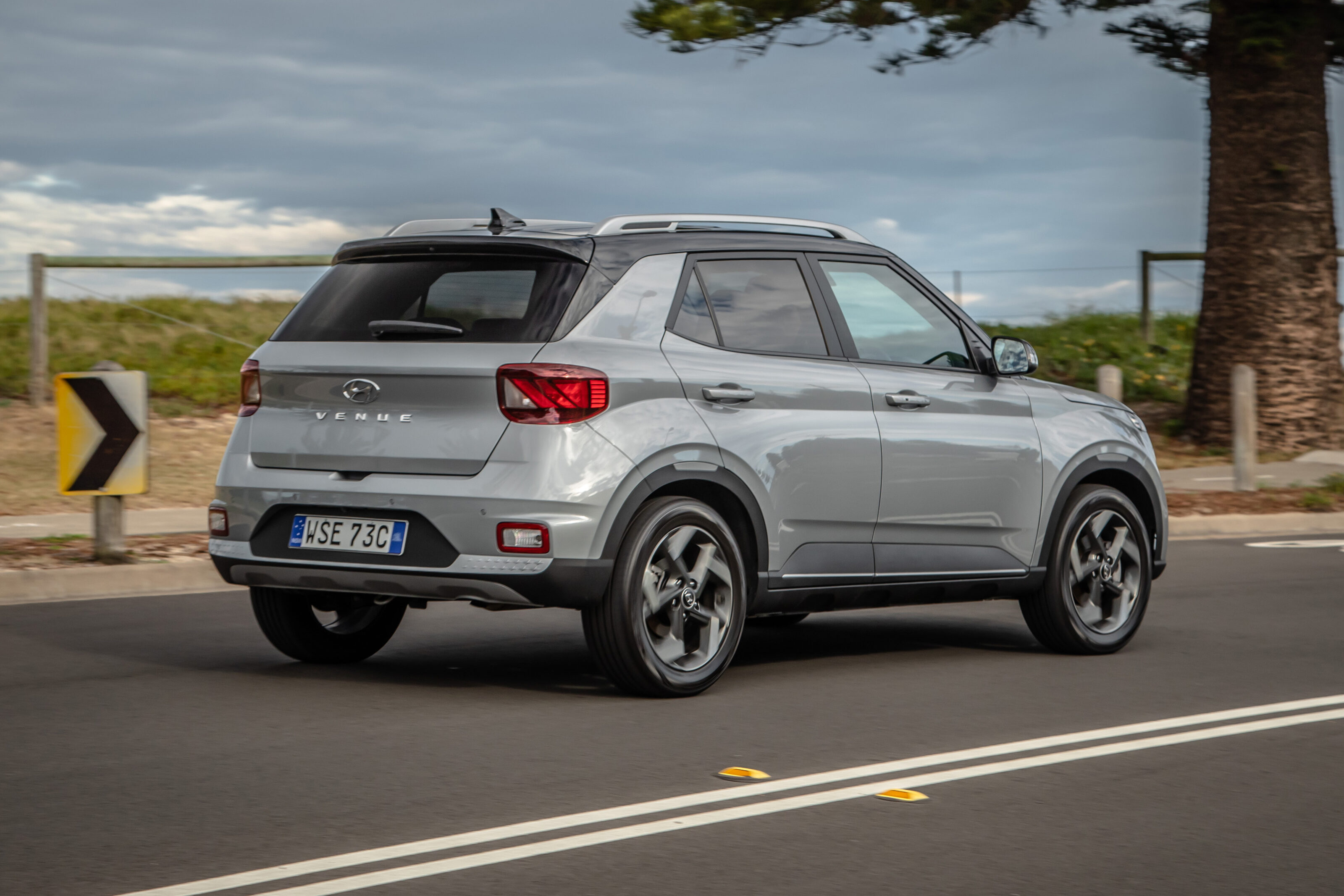
Aside from that, with its small size, handily quick steering (2.7 turns lock-to-lock) and a pretty decent amount of grip from the 215/55 tyres, the Venue is good fun to get around in.
It’s not a back-road tearer, but if the mood takes you one day, you’ll have a bit of fun in some twisties, although the tyres will ensure safe understeer will set in before you get too excited. The body does roll a little, but it’s very well controlled and sticks with Hyundai’s recent form of well-sorted chassis.
The MacPherson struts up front and torsion beam rear behave themselves most of the time, delivering a good ride and handling balance and only really upsetting occupants over sharp bumps or, less regularly, mid-corner bumps. What it doesn’t do is take any crap from potholes and rubbish surfaces, the composure holding until things get really broken.
On top of that, it’s super-easy to park pretty much anywhere.
The Venue drinks 91 RON and the official combined figure of 7.2L/100km seems achievable since I got 7.9L/100km (indicated) in mostly city driving.
2021 Hyundai Venue Elite Ownership
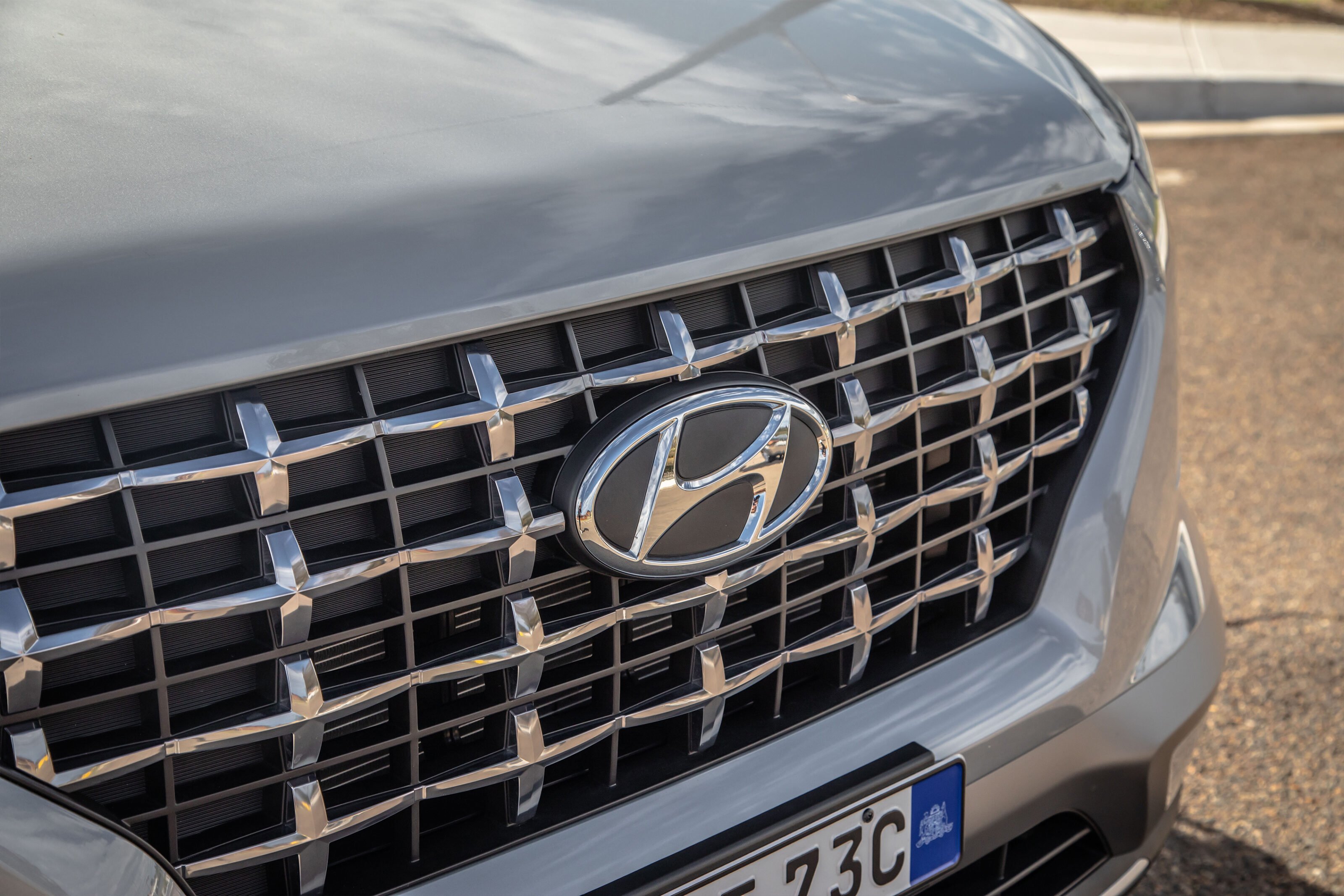
Hyundai offers a five-year warranty with unlimited kilometres, a 12-month roadside assist package and capped-price servicing. If you stick with dealer servicing, you get a yearly extension on the roadside assist for up to a decade, which I think only Hyundai offers, along with lifetime capped-price servicing.
Servicing comes around every 12 months/15,000km. The first five intervals amount to $1575, for an average of $315 a service, which is competitive rather than outright cheap. A Yaris Cross, for instance, is cheaper to service but costs a lot more to buy. You can also pre-pay three, four or five years of servicing, which often activates some sort of offer with Hyundai finance.
VERDICT
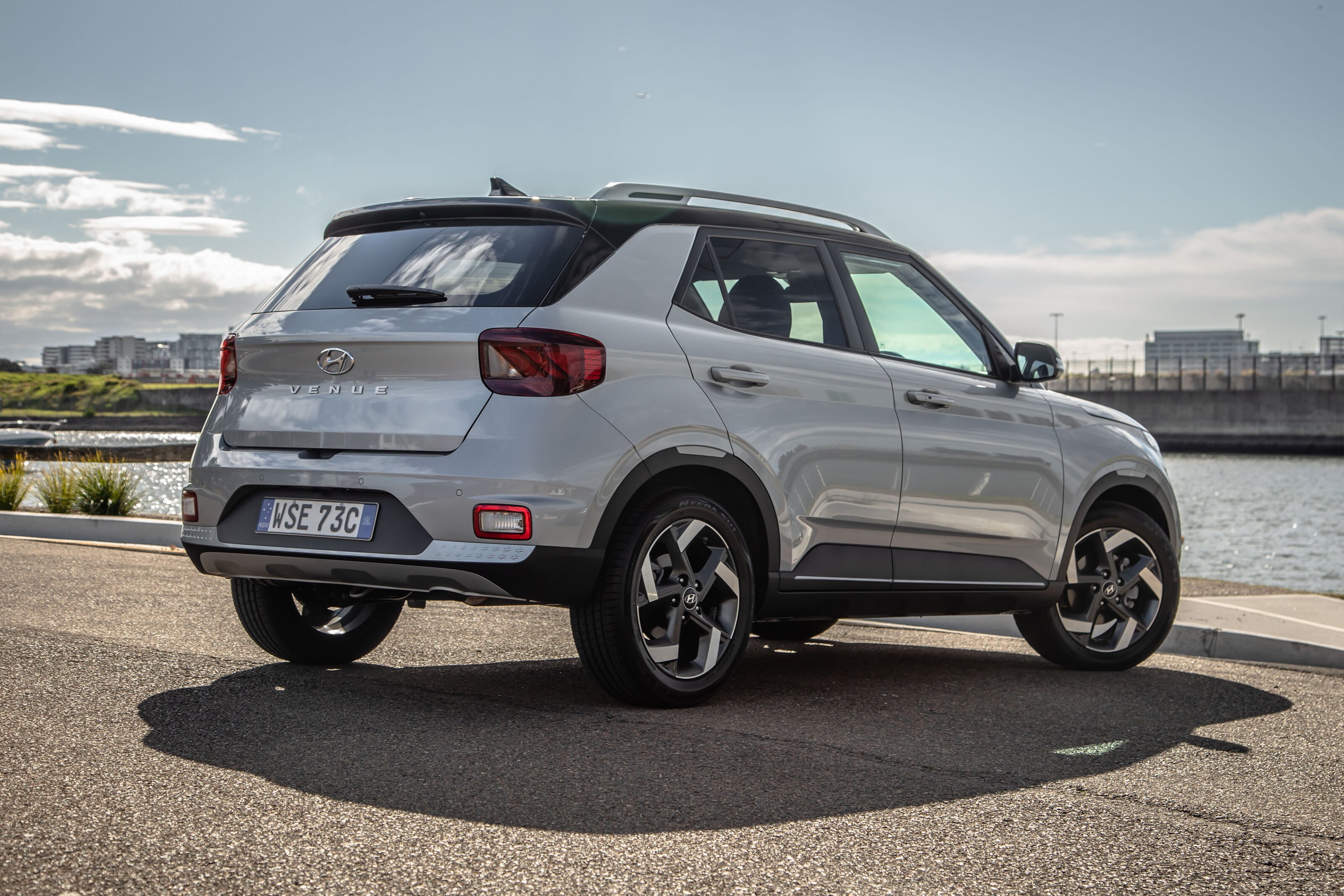
The Venue Elite is fun, chunky and funky. I’m not sure a top-spec light SUV is the kind of car the market is clamouring for, but some people are game enough to pay into the $40,000s for a Mazda CX-3, albeit with a bigger engine, all-wheel drive and other bits and pieces.
What I really like about the Venue is the styling and overall driving experience, even if the engine is a bit ho-hum.
Small SUV buyers seem to have a fairly narrowly defined set of requirements and the Venue certainly hits them. I just reckon that the best of what the Venue offers – decent tech, fun to drive and those looks – are taken care of by the cheaper versions.
The compelling bits of the Elite are a couple of extra safety features (good) and the sat-nav (meh). If that’s worth a grand or two extra to you, go for it.
2021 Hyundai Venue Elite Specifications
| Body: | five-door compact SUV |
|---|---|
| Drive: | front-wheel drive |
| Engine: | 1.6-litre four-cylinder |
| Transmission: | six-speed automatic |
| Power: | 90kW @ 6300rpm |
| Torque: | 151Nm @ 4850rpm |
| Bore stroke (mm): | 77.0 x 85.4 |
| Compression ratio: | 10.5 : 1.0 |
| 0-100km/h: | 11 sec (estimate) |
| Fuel consumption: | 7.2L/100km (combined) |
| Weight: | 1225kg |
| Suspension: | MacPherson struts (front); torsion beam (rear) |
| L/W/H: | 4040/1770/1592mm |
| Wheelbase: | 2520mm |
| Brakes: | 280mm ventilated disc (front); 262mm solid disc (rear) |
| Tyres: | 205/55 R17 Nexen |
| Wheels: | 17-inch alloy wheels (space saver spare) |
| Price: | $26,740 + ORC |
Score breakdown
Things we like
- Funky looks
- Spacious for its size
- Good chassis
Not so much
- Featureless back seat
- Characterless engine
- Halogen headlights a bit weak
We recommend
-
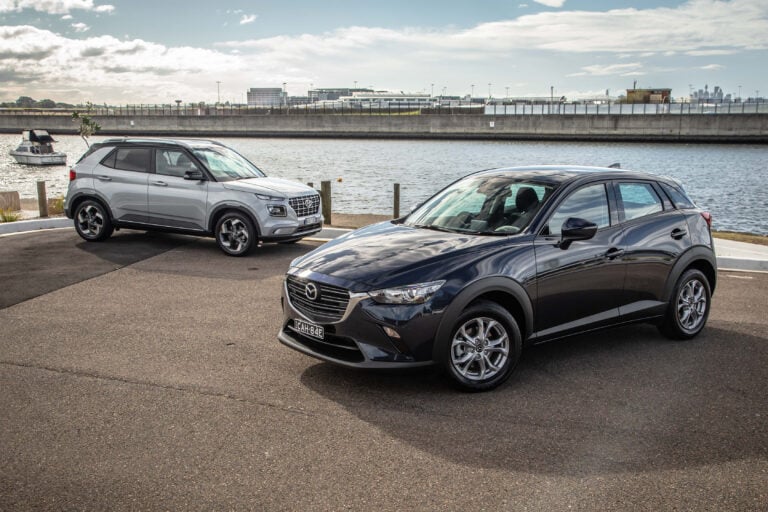 Comparisons
ComparisonsHyundai Venue vs Mazda CX-3 comparison review
Now ageing gracefully, the Mazda CX-3 Maxx Sport fronts up to Hyundai's much newer Venue Elite, but which is the ultimate winner?
-
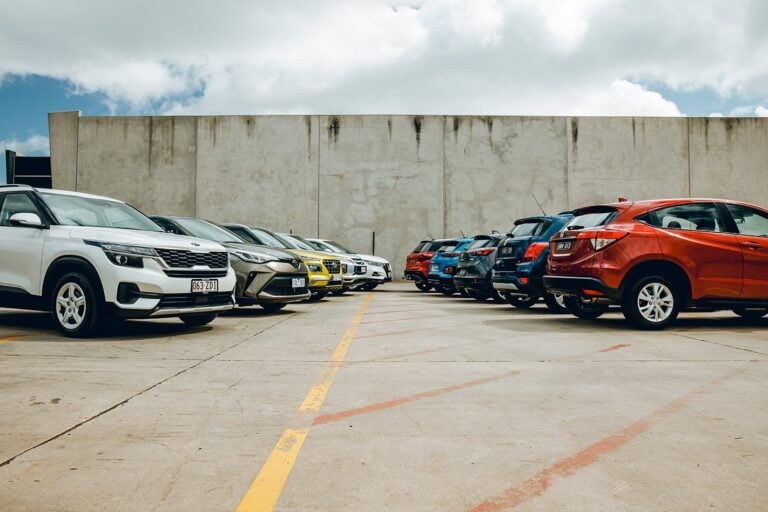 Reviews
Reviews2020's Best Small SUV Megatest
Thinking about making a big decision on a small SUV? Step away from the dealership until you've read our fearless ranking.
-
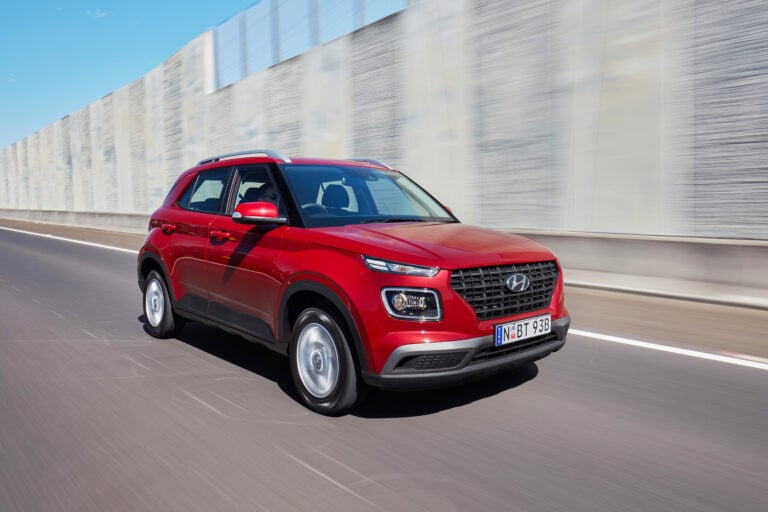 News
News2022 Hyundai Venue pricing and features for Australia
Hyundai has bumped up pricing across the Venue range, ahead of the launch of a facelifted model


